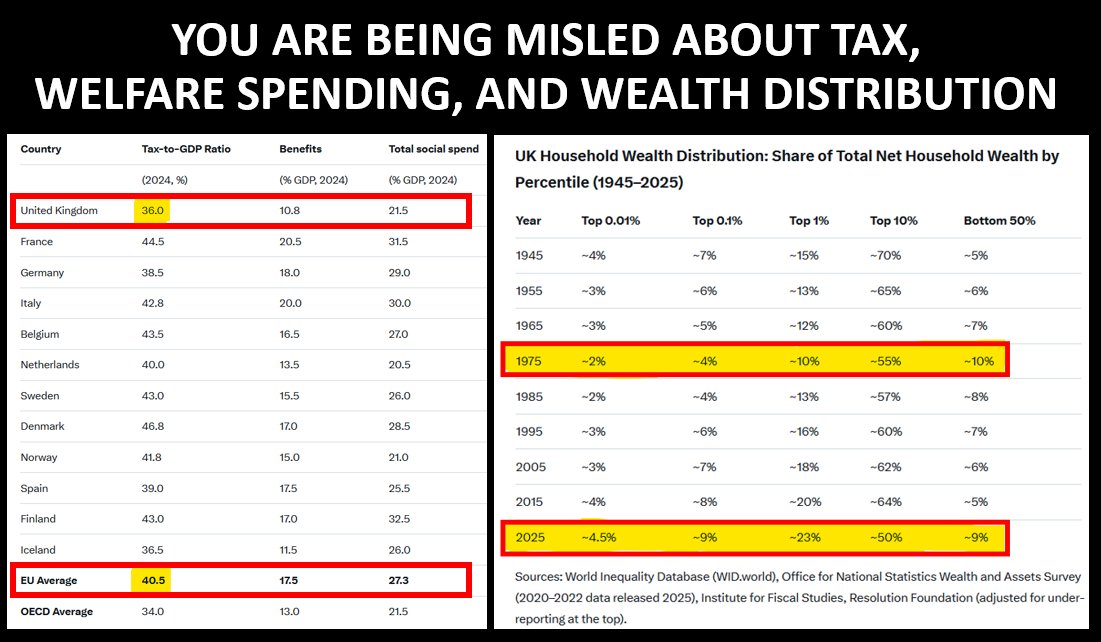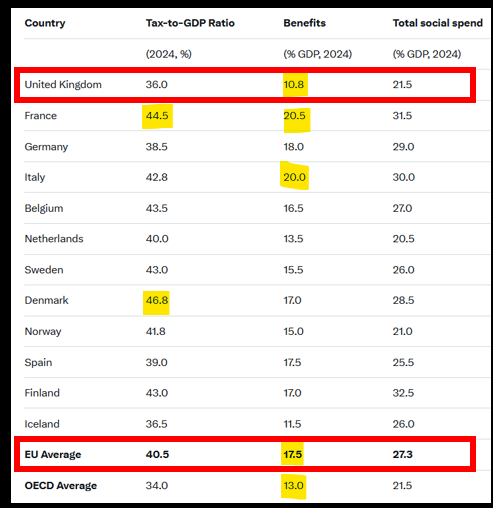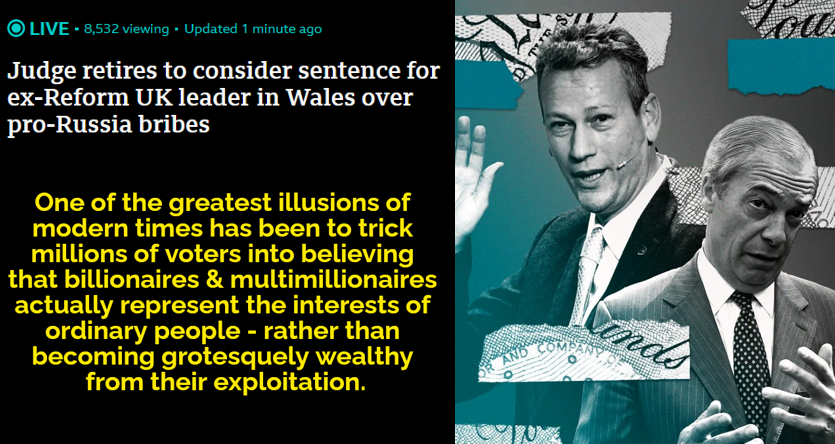#THREAD
There's much about #fascism that is largely hidden from us in Britain.
#Fascist ideas prospered politically only when perceived economic threats increased their appeal to members of certain social groups.
#CostOfLivingCrisis
britannica.com/topic/fascism/…
There's much about #fascism that is largely hidden from us in Britain.
#Fascist ideas prospered politically only when perceived economic threats increased their appeal to members of certain social groups.
#CostOfLivingCrisis
britannica.com/topic/fascism/…
In 1928, before the onset of the Great Depression in Germany, Hitler received less than 3 percent of the vote; after 1930, however, far more voters—many of them middle and lower-middle class individuals fearful of “proletarianization”—gave him their support.
The economic anxiety underlying the success of Nazism was reflected to some extent in party membership, which was drawn disproportionately from economic elites and other high-status groups—especially for leadership positions.
These posts also contained large numbers of higher civil servants, former military officers, doctors, lawyers, businessmen, & landed aristocrats.
In the lower ranks of the party, white-collar workers were overrepresented and blue-collar workers were underrepresented.
In the lower ranks of the party, white-collar workers were overrepresented and blue-collar workers were underrepresented.
#Fascism originally received most of its support from large and small landowners who felt beleaguered by landless farm workers and from businessmen and white-collar workers who felt a similar threat from industrial workers.
In 1927, 75 percent of the membership of Mussolini’s party came from the middle and lower-middle classes and only 15 percent from the working class. Nearly 10 percent came from Italy’s economic elites, who represented a much smaller portion of the general population.
The Nazis drew more support from small towns than they did from large cities. In rural areas, Protestants were overrepresented in the party, and Catholics were underrepresented. In less-industrialized European countries, fascists relied more heavily on rural support.
Although in principle there were significant differences between fascism and nonfascist #conservatism, the two camps shared some of the same goals, which in times of crisis led some nonfascists to collaborate with fascists.
“Any study of fascism which centres too narrowly on the fascists and Nazis alone may miss the true significance of right-wing extremism.” - historian John Weiss.
“For without necessarily becoming party members or accepting the entire range of party principles themselves...aristocratic landlords, army officers, government and civil service officials, and important industrialists in Italy and Germany helped bring fascists to power.”
“Property and income distribution and the traditional class structure remained roughly the same under fascist rule. What changes there were favoured the old elites or certain segments of the party leadership.”
During the Great Depression, thousands of middle-class conservatives fearful of the growing power of the left abandoned traditional right-wing parties & adopted #fascism.
The ideological distance travelled from traditional conservatism to Nazism was sometimes small, since many of the ideas that Hitler exploited in the 1930s had long been common currency within the German right.
The economic programs of the great majority of fascist movements were extremely conservative, favouring the wealthy far more than the middle class and the working class. Their talk of national “socialism” was quite fraudulent in this respect.
Although some workers were duped by it before the fascists came to power, most remained loyal to the traditional antifascist parties of the left. “Property & income distribution & the traditional class structure remained roughly the same under fascist rule.”
“What changes there were favoured the old elites or certain segments of the party leadership” (John Weiss)
“If a revolution is understood to mean a significant shift in class relations, including a redistribution of income & wealth, there was no Nazi revolution” (Roger Eatwell).
“If a revolution is understood to mean a significant shift in class relations, including a redistribution of income & wealth, there was no Nazi revolution” (Roger Eatwell).
Ex-journalist Mussolini, a leading member of the Italian Socialist Party before WWI, became a fierce antisocialist after the war. After coming to power, he banned all Marxist organizations and replaced their trade unions with government-controlled corporatist unions.
Until he instituted a war economy in the mid-1930s, Mussolini allowed industrialists to run their companies with a minimum of Govt interference. Despite his former anticapitalist rhetoric, he cut business taxes, permitted cartel growth, & decreed wage reduction.
Between 1928 and 1932 real wages in Italy dropped by almost half. Mussolini admitted that the standard of living had fallen but stated that “fortunately the Italian people were not accustomed to eating much and therefore feel the privation less acutely than others.”
Although Hitler claimed that the Nazi Party was more “socialist” than its conservative rivals, he opposed nationalization of major industries. On May 2, 1933, he abolished all free trade unions in Germany.
Hitler's minister of labour, Robert Ley, later declared that it was necessary “to restore absolute leadership to the natural leader of the factory, that is, the employer.”
Nazi “anticapitalism,” such as it was, was aimed primarily at Jewish capitalism; non-Jewish capitalists were allowed to keep their companies and their wealth, a distinction that was made in the Nazi Party’s original program and never changed.
Although Hitler reduced unemployment, most German workers were forced to toil for lower wages & longer hours & under worse conditions than had been the case during the Weimar Republic. His solution to unemployment depended on the recruitment of thousands of men into the military.
The fascist economic theory #corporatism called for organizing each of the major sectors of industry, agriculture, the professions, & the arts into state- or management-controlled trade unions and employer associations, or “corporations.”
Each of these “corporations” would negotiate labour contracts and working conditions and represent the general interests of their professions in a larger assembly of corporations, or “corporatist parliament.”
Corporatist institutions would replace all independent organizations of workers and employers, and the corporatist parliament would replace, or at least exist alongside, traditional representative and legislative bodies.
In theory, the corporatist model represented a “third way” between capitalism & communism, allowing for the cooperation of workers & employers for the good of the nation.
In practice, fascist corporatism was used to destroy labour movements & suppress political dissent.
In practice, fascist corporatism was used to destroy labour movements & suppress political dissent.
In 1936, for example, the economic program of the French Social Party included shorter working hours and vacations with pay for “loyal” workers but not for “disloyal” ones, and benefits were to be assigned by employers, not the government.
The Nazi “Strength Through Joy” program, which provided subsidies for vacations & other leisure activities for workers, operated on similar principles. Corporatist legislation was passed in late 1920s Italy, creating several government-controlled unions & outlawing strikes.
The Salazar regime in Portugal, using the Italian legislation as its model, outlawed the Trade Union Federation and all leftist unions, made corporatist unions compulsory for workers, and declared strikes illegal—all of which contributed to a decline in real wages.
In the political discourse of the fascist right, economic problems related to large disparities of wealth between rich & poor were treated as problems of social status & class prejudice. Rather than attacking upper-class wealth, fascists attacked upper-class snobbism.
Rather than narrowing class differences, the fascist right taught that these differences were subjective & unimportant. National “socialism” was said to occur when a Hitler Youth from a rich family & a Hitler Youth from a poor family became comrades; no wealth had to be shared.
This conception of 'socialism was in part an outgrowth of the Nazis’ attempt to transfer military values to civilian life: In war it did not matter if the soldier next to you came from a poor or a wealthy background as long as he fought loyally for the combat unit.
Fascists favoured military values such as courage, unquestioning obedience to authority, discipline, and physical strength. They also adapted the outward trappings of military organizations, such as paramilitary uniforms and Roman salutes.
Hitler imagined a God who presided over military conflicts & ensured the survival of the fittest. Mussolini used slogans such as “A minute on the battlefield is worth a lifetime of peace,” “Better to live an hour like a lion than a hundred years like a sheep.”
Hitler envisioned the ideal German society as a Volksgemeinschaft, a racially unified & hierarchically organized body in which the interests of individuals would be strictly subordinate to those of the nation, or Volk.
Like a military battalion, the people’s community would be permanently prepared for war and would accept the discipline that this required. The Italian, French, and Spanish versions of this doctrine, known as “integral nationalism,” were similarly illiberal, though not racist.
#Fascists characteristically attempted to win popular support and consolidate their power by mobilizing the population in mass meetings, parades, & other gatherings.
#Fascists exploited principles borrowed from American PR & advertising, which stressed the importance of appealing to the audience’s emotions rather than to its reason, using large gatherings to create patriotic fervour & to encourage fanatic enthusiasm for the fascist cause.
The Nazi rallies at Nürnberg, for example, were organized with theatrical precision and featured large banners, paramilitary uniforms, martial music, torchlight parades, bonfires, and forests of fascist salutes accompanied by prompted shouts of “Sieg Heil!”
Hitler believed it best to hold such gatherings at night, when audiences would be more susceptible to irrational appeals. Fascists also sought to regiment the population, especially youth, by infiltrating local social networks, providing soup kitchens & nationalistic ceremonies.
Mussolini’s regime & Salazar’s Govt in Portugal also held Govt-organized mass rallies. After 1936 Japanese fascists worked directly with the nation’s elites, the dictatorship based on a coalition of military leaders, industrialists, state bureaucrats, & conservative politicians.
Fascists defended the Führerprinzip, the belief that party & state should have a single leader with absolute power. Hitler was the Führer & Mussolini the Duce, who gave the orders that everyone else had to obey. The leader's authority was often enhanced by his personal charisma.
The leadership principle also applied at lower levels of the hierarchy. Fascist organizations sometimes exhibited the “corporal syndrome”: persons willingly submit to the authority of those above them in exchange for the gratification they derive from dominating those below.
Reminiscent of contemporary #incel discourse, #fascists aimed to transform the ordinary man into the “new man,” a “virile” being who would put decadent bourgeoisie, cerebral Marxists, & “feminine” liberals to shame.
The new man would be physically strong and morally “hard,” admiring what was forceful and vigorous and despising everything “weak” and “soft.” As Hitler described him, the new man was “slim and slender, quick like a greyhound, tough like leather, and hard like Krupp steel.”
The new man was a man of the past as well as the future. Italian fascists held up the soldiers of ancient Rome as models, and Bertrand de Jouvenel praised the “brutal barons” of the Middle Ages and the original conquerors of Europe, the Franks.
“Fascist man,” wrote de Jouvenel, was “a throwback to the warrior and property holder of yesteryear, to the type of man who was the head of a family and a clan: When this type of man ceases to win esteem and disappears, then the process of decadence begins.”
Drieu La Rochelle believed Hitlerian man to be superior to Democratic, Marxist & Liberal men. “The Hitlerian is a type who rejects culture, who stands firm in the middle of sexual & alcoholic depravity & dreams of bringing to the world a physical discipline with radical effects.”
During WWII, in a speech to an SS unit that had executed many Jews, SS chief Heinrich Himmler reminded his “new men” that they needed to be emotionally as well as physically hard:
“Most of you know what it means when 100 corpses are piled up, when 500 or 1,000 are piled there. To have gone through this and—with exceptions due to weakness—to have remained decent, that is what has made us hard. I have to expect of you superhuman acts of inhumanity.” 

Fascist educators emphasized character building over intellectual growth, devalued the transmission of information, inculcated blind obedience to authority, and discouraged critical and independent thinking that challenged fascist ideology.
According to Nazi writer Herman Klaus, the teacher “is not just an instructor and transmitter of knowledge.…He is a soldier, serving on the cultural and political front of National Socialism. For intellectuals belong to the people or they are nothing.”
The ultimate aim of Nazi education was not to make students think more richly but to make them war more vigorously. “The National Socialist revolution has replaced the image of the cultivated personality with the reality of the true German man.” - Nazi minister of Culture.
“It has substituted for the humanistic conception of culture a system of education which develops out of the fellowship of actual battle.” Teachers who appeared skeptical of Nazi “idealism” were subject to dismissal, often as a result of reports by student informers.
Some of the ugliest aspects of fascism—intolerance, repression, & violence—were fuelled by what fascists saw as a morally justified struggle against “decadence”, which meant a number of things: materialism, self-indulgence, hedonism, cowardice, & physical & moral softness.
"Decadence" was also associated with rationalism, skepticism, atheism, humanitarianism, and political, economic, and gender democracy, as well as rule by the Darwinian unfit, by the weak and the “female.”
For anti-Semitic fascists, Jews were the most decadent of all.
For anti-Semitic fascists, Jews were the most decadent of all.
The opposite of decadence was “spirituality,” which transcended materialism and generated self-discipline and virility. The spiritual attitude involved a certain emotional asceticism that enabled one to avoid feelings of pity for one’s victims.
It also involved Darwinian notions of survival of the fittest, a belief in the right of natural elites to upward social and political mobility, and accommodation with members of the upper classes. It prized hierarchy, respect for superiors, and military obedience.
Fascist “spirituality” was forceful toward the weak, and it was “male.” The spiritual attitude was also hateful. In 1934 Ernst Röhm, leader of the SA, worried that Germans had “forgotten how to hate.” “Virile hate,” he wrote, “has been replaced by feminine lamentation.”
Whereas cosmopolitan conservatives often supported international cooperation and admired elite culture in other countries, fascists espoused extreme nationalism and cultural parochialism.
Fascist ideologues taught that national identity was the foundation of individual identity and should not be corrupted by foreign influences, especially if they were left-wing. Nazism condemned Marxist and liberal internationalisms as threats to German national unity.
Fascists in general wanted to replace internationalist class solidarity with nationalist class collaboration. The Italian, French, and Spanish notion of integral nationalism was hostile to individualism and political pluralism.
Unlike democratic conservatives, fascists accused their political opponents of being less “patriotic” than they, sometimes even labelling them “traitors.” Portuguese fascists spoke of “internal foreigners” who were “antination.”
In France, immigrants—particularly left-wing immigrants—were special targets of fascist nationalism. Jean Renaud of French Solidarity demanded that all foreigners seeking residence in France be rigorously screened and that the unfit be denied entry “without pity”.
La Rocque blamed Hitler for driving German refugees into France & condemned the “foolish sentimentality” that prompted the Govt to accept them. He also criticized France’s naturalization policies for allowing French cities to be inundated by a rising tide of “undesirables.”
France, La Rocque declared, had become the shepherd of “a swarming, virulent mob of outlaws,” some of whom, under the pretext of fleeing Nazi persecution, were really infiltrating France as spies. Like the current UK right, Fascists blamed their countries’ problems on scapegoats.
Jews, Marxists, & immigrants were demonized. According to fascist propaganda, the 1930a depression resulted less from insufficient Govt regulation of the economy or inadequate lower-class purchasing power than from left-wing agitation & the presence of immigrants.
Fascists praised the Volk and pandered to populist anti-intellectualism. Nazi art criticism, for example, upheld the populist view that the common man was the best judge of art and that art that did not appeal to popular taste was decadent.
Unlike left-wing populism, fascist populism did not attribute workers’ hardships to big business & landowners & did not advocate progressive taxation, higher pay for industrial & farm workers, protection of unions, & the right to strike, thus protecting the wealth of rich elites. 

Dozens of fascist writers also praised cultural traditionalism, or “rootedness.” Under the Third Reich, Goebbels subsidized an exhibition of modern art not to celebrate its glory but to expose its decadence; he called it simply the “Exhibition of Degenerate Art.”
Fascism’s claims to newness did not prevent its propagandists from pandering to fearful traditionalists who associated cultural modernism with secular humanism, feminism, sexual license, and the destruction of the Christian family.
Fascists pandered to antiurban feelings. Like the current UK Government, the Nazis won most of their electoral support from rural areas & small towns. In Nazi propaganda the ideal German was not an urban intellectual but a simple peasant: intellectualism was considered a threat.
Jews were often portrayed—and therefore condemned—as quintessential city dwellers. Romanian fascism relied on the support of landed peasants who distrusted the “wicked” city. The agrarian wing of Japanese fascism praised the peasant soldier & denigrated the industrial worker.
Like the current Christian fundamentalist Republican right in the #USA, under fascist regimes women were urged to perform their traditional gender role as wives and mothers and to bear many children for the nation.
Mussolini instituted policies severely restricting women’s access to jobs outside the home (policies that later had to be revised to meet wartime exigencies), and he distributed gold medals to mothers who produced the most children.
The Nazis forbade female party members from giving orders to male members. In France, Vallin equated feminists with insubordinate proletarians: “It is toward a sort of class struggle, opposing the feminine ‘proletariat’ to the masculine ‘capitalist,’ that feminism is leading us.”
De Jouvenel equated women with hedonism and hedonism with decadence. Europe, he wrote in 1938, had grown soft and feminine from pleasure seeking, becoming “like a woman who had just escaped a frightening accident. [She] needed light, warmth, music.”
De Jouvenel believed the feminization of Europe had been its downfall. Drieu La Rochelle claimed that educated women undermined his manhood. He characterized political movements he disliked as feminine and those he admired as masculine—fascism being the most masculine of all.
Just as Marxists, liberals, and conservatives differed within and between various countries, so too did fascists. Although not all fascists believed in biological racism, it played a central role in the actions of those who did.
Nazism was viciously racist, especially in its attitude toward Jews. The Nazis blamed the Jews for almost everything wrong with Germany, from the Great Depression and the rise of Marxism to the evils of international capitalism and decadence in art.
The Holocaust, culminating in the “final solution to the Jewish question,” was the immensely cruel outcome of this hatred.
Croatian fascists preached the racial inferiority of Serbs, and in the late 1930s they became increasingly anti-Semitic.
Croatian fascists preached the racial inferiority of Serbs, and in the late 1930s they became increasingly anti-Semitic.
Elsewhere in Europe & in South Africa, Latin America, & the USA, fascist movements were racist. In Poland members of the Falanga attacked Jews in the streets and created “ghetto benches” for Jewish students in the lecture rooms of the University of Warsaw.
In the United States, the Ku Klux Klan and other groups preached the supremacy of the white race.
Some fascists in Japan taught that the Japanese were a superior race, and Syrian fascists claimed superiority for their people as well.
Some fascists in Japan taught that the Japanese were a superior race, and Syrian fascists claimed superiority for their people as well.
In contrast to fascists in most other European countries, Mussolini opposed anti-Semitism during the first 12 years of his rule. After 1933, however, he sometimes allowed anti-Semites within his party to condemn “unpatriotic” Jews in the press.
In 1938 the Italian Govt passed anti-Semitic legislation, & later abetted the Holocaust. Prior to the German takeover of Austria, the fascist regimes of Dollfuss & Schuschnigg rejected anti-Semitism, & many Austrian Jews—eg Sigmund Freud—supported them for resisting Nazism.
Fascist groups such as French Action and French Solidarity were openly anti-Semitic, though they claimed to object to Jews on “cultural” rather than racial grounds, fuelling the antisemitic conspiracy theory of 'cultural Marxism', often voiced by contemporary UK @Conservatives.
In 1941 La Rocque placed responsibility for the “mortal vices” of France on Jews and Freemasons.
Although British fascism was not anti-Semitic at the outset—Mosley’s Blackshirts were trained by the British boxer Ted (“Kid”) Lewis, who was Jewish—it became so by 1936.
Although British fascism was not anti-Semitic at the outset—Mosley’s Blackshirts were trained by the British boxer Ted (“Kid”) Lewis, who was Jewish—it became so by 1936.
Most fascist movements portrayed themselves as defenders of Christianity & the traditional Christian family against atheists & amoral humanists eg Catholic fascist movements in Poland, Spain, Portugal, France, Austria, Hungary, Croatia, Bolivia, Argentina, Chile, & Brazil.
Fascist intellectual Robert Brasillach described the Spanish Civil War as a conflict between Catholic fascism & atheistic Marxism. La Rochelle rejected liberal Catholicism but praised the “virile, male Catholicism” of the Middle Ages & the “warrior Christianity of the Crusades.”
Although fascists in Germany and Italy also posed as protectors of the church, their ideologies contained many elements that conflicted with traditional Christian beliefs, and their policies were sometimes opposed by church leaders.
The Nazis criticized the Christian ideals of meekness and guilt on the grounds that they repressed the violent instincts necessary to prevent inferior races from dominating Aryans.
Martin Bormann, the second most powerful official in the Nazi Party after 1941, argued that Nazi and Christian beliefs were “incompatible,” primarily because the essential elements of Christianity were “taken over from Judaism.”
Hitler wished to replace Christianity with a racist form of warrior paganism. Although cautious about alienating Christians during WWII, he sometimes permitted Nazi officials to put pressure on Protestant & Catholic parents to register them for 'ideological instruction'.
Despite the many anti-Christian elements in Nazism, the vast majority of Nazis considered themselves to be religious, and most German anti-Semites supported Christianity purged of its “Jewish” elements.
The pro-Nazi German Christians held that Christ had been a blond-haired, blue-eyed Aryan, and male members called themselves “SS men for Christ.” In many German families children began their prayers before meals with the phrase, “Führer, my Führer, bequeathed to me by the Lord.”
In Italy, Mussolini signed a concordat with the papacy, the Lateran Treaty (1929), which, among other things, made Roman Catholicism the state religion of Italy and mandated the teaching of Catholic doctrine in all public primary and secondary schools.
Many practicing Catholics joined the conservative wing of the Fascist Party, but in 1931, Pope Pius XI denounced fascism’s “revolution which snatches the young from the Church & from Jesus Christ, and which inculcates in its own young people hatred, violence and irreverence.”
Fascist Italy and fascist Japan were allies of Germany during the war, though Mussolini’s autonomy in this alliance was lost when German divisions occupied Italy in 1942 following the landing of American and British troops in North Africa.
In the mid-1930s, other non-German fascists, including members of the British Union of Fascists and the German-American Bund, expressed admiration for Hitler’s forceful leadership without inviting a German invasion of their countries.
In 1938 La Rocque suggested that the best way for France to avoid a Nazi invasion was to become more fascist itself. In 1941, La Rocque called for “continental collaboration” with Germany and criticized de Gaulle and his British allies for threatening to “enslave” France.
Mussolini and Hitler did not invent fascist ideology. Indeed, fascism was neither a 20th-century creation nor a peculiarly Italian or German one. Originating in the 19th century, fascist ideas appeared in the works of writers from France as well as Austria, Germany, and Italy.
Many fascist ideas derived from the reactionary backlash to the progressive revolutions of 1789, 1830, 1848, and 1871 and to the secular liberalism and social radicalism that accompanied these upheavals.
De Maistre condemned the 18th-century Enlightenment for having subverted the dominance of traditional religion and traditional elites and paid homage to the public executioner as the protector of a divinely sanctioned social hierarchy.
Taine lamented the rise to power of the masses, whom he suggested were at a lower stage of biological evolution than aristocrats. Le Bon wrote a primer on how to divert the barbarism of the masses from revolution to reaction.
Barrès fused ethnic rootedness with authoritarian nationalism and contended that too much civilization led to decadence and that hatred and violence were energizing remedies.
German populist politicians and writers such as Stoecker, Böckel, and Fritsch extolled the idea of racially pure peasants close to the soil who would one day follow a charismatic leader able to intuit the Volk soul without benefit of elections.
Britain’s racial Darwinist Houston Stewart Chamberlain preached Aryan racism, glorified the survival of the fittest, scolded humanitarians for attempting to protect the racially unfit, and rejected the idea of social equality & saw no reason to give inferior races equal rights. 

“The press and popular magazines of Germany and Central Europe had fed a steady diet of racial nationalism to the public since the last quarter of the nineteenth century, and anti-Semitic stereotypes were nothing if not commonplace in German mass culture.” - John Weiss. 

In the late 19th century many conservative nationalists were philosophical idealists who accused liberals & socialists of materialism & thereby portrayed their own politics as more spiritual. Other 19th-century thinkers propagated some #protofascist ideas while rejecting others.
The parallels between Boris Johnson's Government & Hitler's 1930s German Government are disturbing, eerily uncanny, & undeniable.
https://twitter.com/docrussjackson/status/1371265857108738048?t=YF2Zh6ImxrvNsV2by89I-g&s=19
And here we are.
https://twitter.com/GeorgeMonbiot/status/1577583546524385280?t=c0mAq_dtiVOOASnoqZn4uA&s=19
• • •
Missing some Tweet in this thread? You can try to
force a refresh













